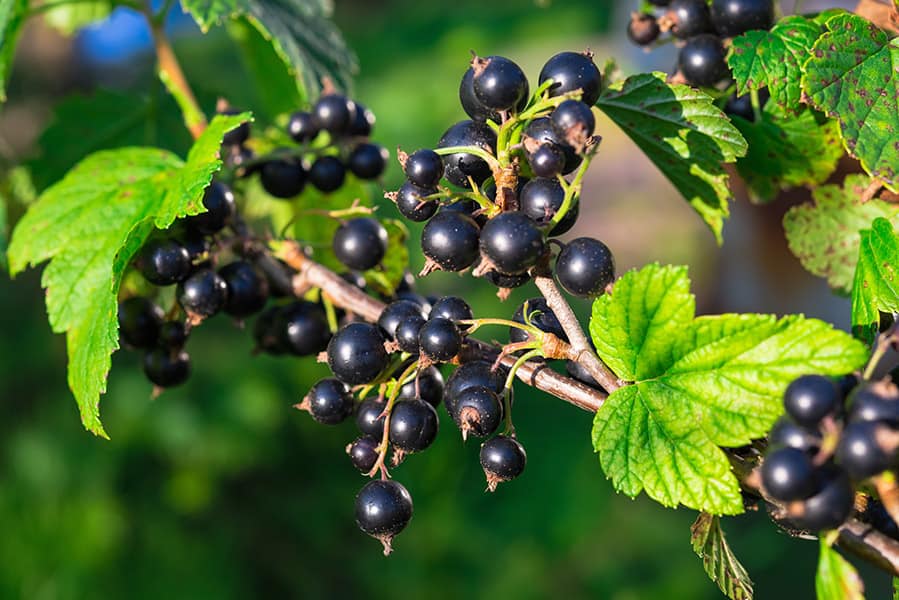Currants make a refreshing juice and black currants, in particular, have almost 3. 5 times the amount of Vitamin C as fresh oranges, on a gram to gram basis.
Black currants are a beloved berry prized for their intense flavor and impressive nutrient profile Their benefits range from high vitamin C to antioxidants to anti-inflammatory properties. However, restrictions on growing black currants exist in some parts of the US due to disease concerns from an outdated ban. Luckily, newer disease-resistant varieties allow black currant cultivation in many regions If you want to add these nutritional powerhouse berries to your garden, here’s what to know about finding reputable black currant plants for sale.
Overview of Black Currant Restrictions
Black currants were once banned in the early 1900s in the US because they spread a tree disease called white pine blister rust. This outdated ban has been lifted in most states, but there are still some restrictions on growing and shipping black currant plants. These prohibitions vary by state, mainly on the east coast and parts of the Midwest where pine forests remain vulnerable.
Some states allow black currants but require specific rust-resistant cultivars. Other states permit them only with a permit, and some outright prohibit them. It’s important to check your state’s exact regulations before purchasing black currant plants. Reputable sellers will be up to date on the rules.
Where To Buy Disease-Resistant Varieties
When looking for black currant plants for sale, prioritize vendors offering disease-resistant cultivars approved for your state. While older varieties are banned, these newer selections carry immunity to white pine blister rust. Here are some reputable mail-order nurseries where you can source healthy, permitted black currant plants:
-
Raintree Nursery – Offers several rust-resistant varieties like Titania, Ben Sarek, and Kirovchanka that can ship to restricted states.
-
Stark Bro’s – Sells Blanca, Titania, and other rust-immune types for shipment to some restricted states.
-
Indiana Berry – Carries Anthracnose-resistant black currant plants and ships with permits to some states
-
Burnt Ridge Nursery – Specializes in unusual edibles like black currants; options limited for eastern/midwestern states.
When shopping online, enter your state in the shipping restrictions filter to see which cultivars will ship to you. Contact sellers if unsure.
What To Look For In A Reputable Nursery
The key to finding healthy black currant plants is purchasing from a nursery with a sterling reputation. Watch for these indicators of a high-quality vendor:
- Specializes in fruit plants, especially berries
- Ships at proper planting times for your region
- Offers a shipping guarantee to account for any plant losses
- Provides guidance on ideal soil preparations and care
- Has a long history of satisfied customer reviews
Additionally, experienced sellers will package plants with care to arrive in good condition. Prioritize vendors with expertise in shipping live nursery stock.
Signs Of Quality For Black Currant Plants
Once you’ve found reputable nurseries to order from, look for these signs of vigorous, healthy black currant plants:
- 1-2 year old, dormant, bare root plants (no leaves or soil)
- Plump roots with no mold, rot, or excess drying
- Root system proportional to cane size
- Clean, sturdy, undamaged canes
- A few buds along canes with no flowering or leafing out
High-grade plants will arrive freshly dug and prepped for ideal planting success. Avoid sources selling potted or leafed-out plants shipped mid-summer.
Optimal Times To Purchase And Plant
Since black currants are cool-season perennials, they should be planted in fall or early spring:
-
Fall – From late September through November provides optimal root establishment before winter dormancy.
-
Spring – Plant as soon as soil can be worked, from March through May depending on your climate.
Avoid obtaining plants too far in advance of these windows as their bare roots are vulnerable. Prioritize vendors that harvest and ship plants to coincide with ideal timing for your area.
Adding Black Currants To Your Landscape
With their tart flavor, antioxidant power, and vivid purple juice, black currants make a unique, nutritious addition to any home orchard or edible landscape. Just be sure to source from reputable growers permitted to ship disease-resistant varieties to your state. With the right cultivar selection and high-quality plant stock, you’ll be harvesting clusters of this superfood berry for years to come.
Three things to know about blackcurrants
Where can I find black and red currant plants?
Find black and red currant plants that thrive in partial to full sunlight and produce currants that are perfect for jam, jelly, or winemaking in stock at Burpee. Burpee
Is black currant a perennial?
The black currant plant is a hardy perennial that grows mainly in the northern parts of Europe and Asia. But it’s also suitable for the cold regions in the US. European and Asian black currant is known as Ribes nigrum, while the American black currant goes by Ribes americanum.
What is consort black currant?
Consort Black Currant (Ribes nigrum) is a hardy shrub, producing clusters of dark, aromatic berries. These fruits are rich in vitamin C and perfect for jams, jellies, and wines. Its fragrant flowers attract pollinators, enhancing garden biodiversity. This self-fertile plant is easy to grow and offers both culinary and medicinal benefits.
How big does a black currant grow?
Black currant has a strong fragrance, and all parts of the plant are deliciously aromatic, from the leaves to stems and flowers. The average black currant shrub grows to about 5 feet tall and wide. Thanks to its manageable size, you can grow black currant in the garden or in a container kept on the balcony or patio.
- The Ultimate Guide to Growing Strawberries in Raised Beds - August 8, 2025
- No-Dig Garden Beds: The Easiest Way to Grow a Beautiful Garden - August 6, 2025
- How to Protect and Preserve Wood for Raised Garden Beds - August 6, 2025

